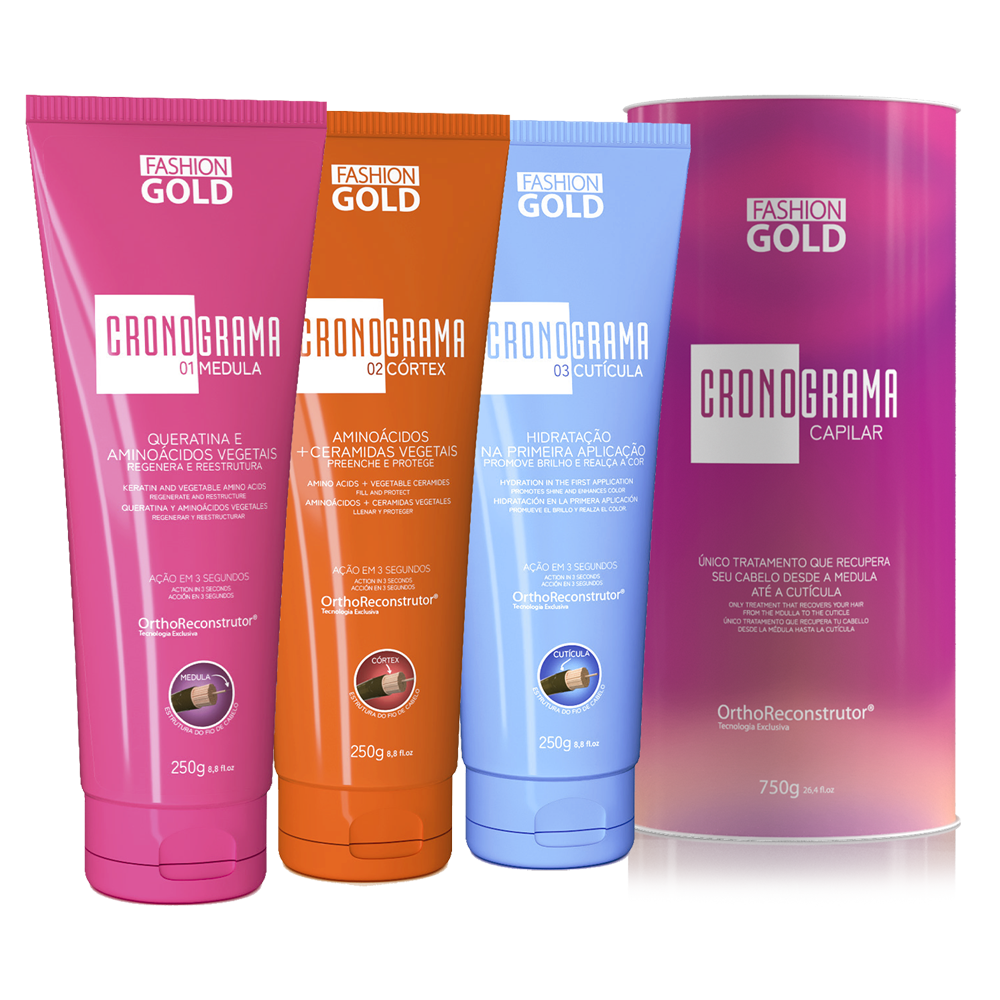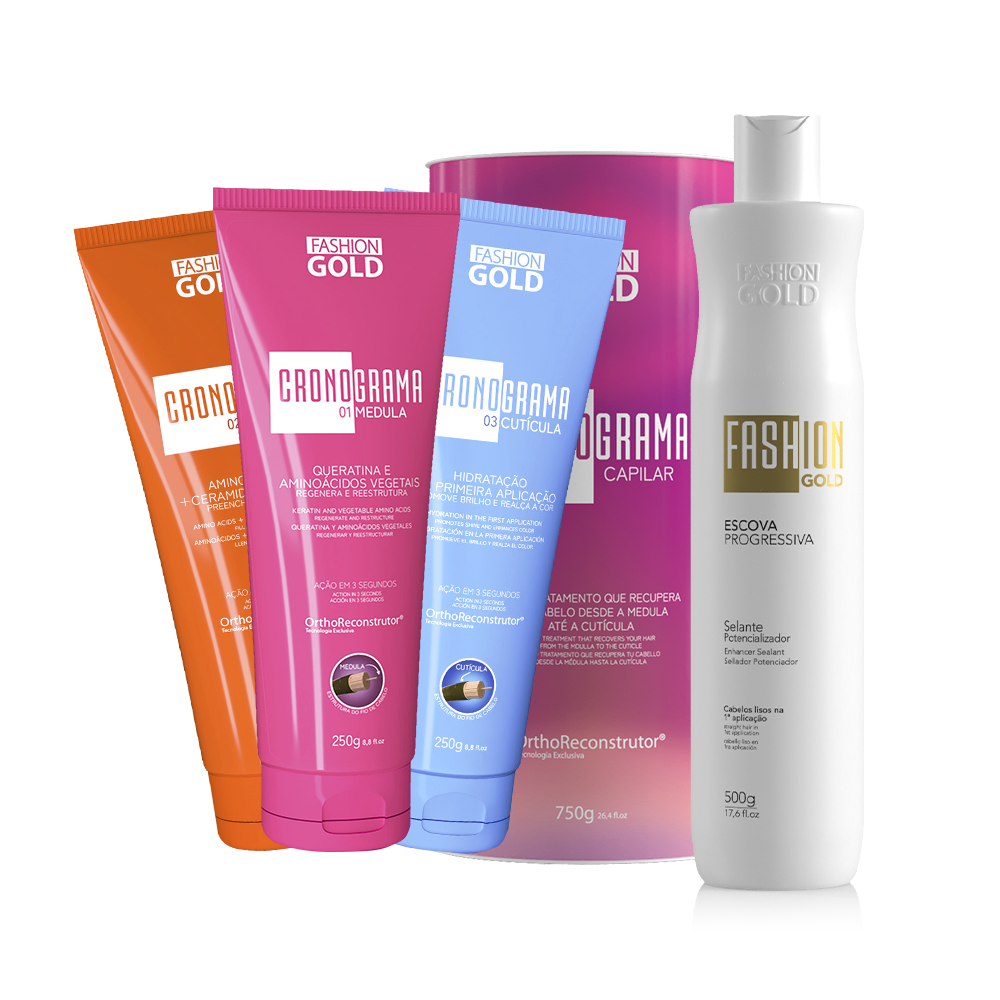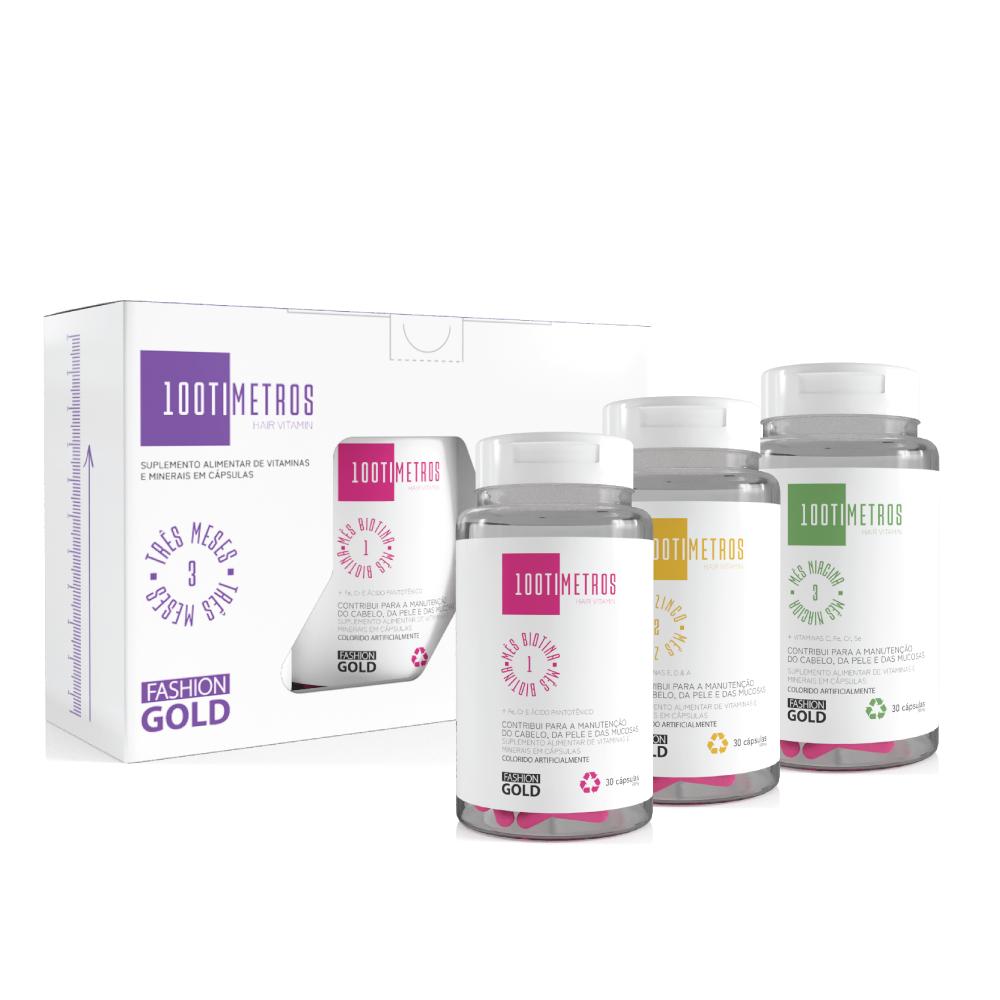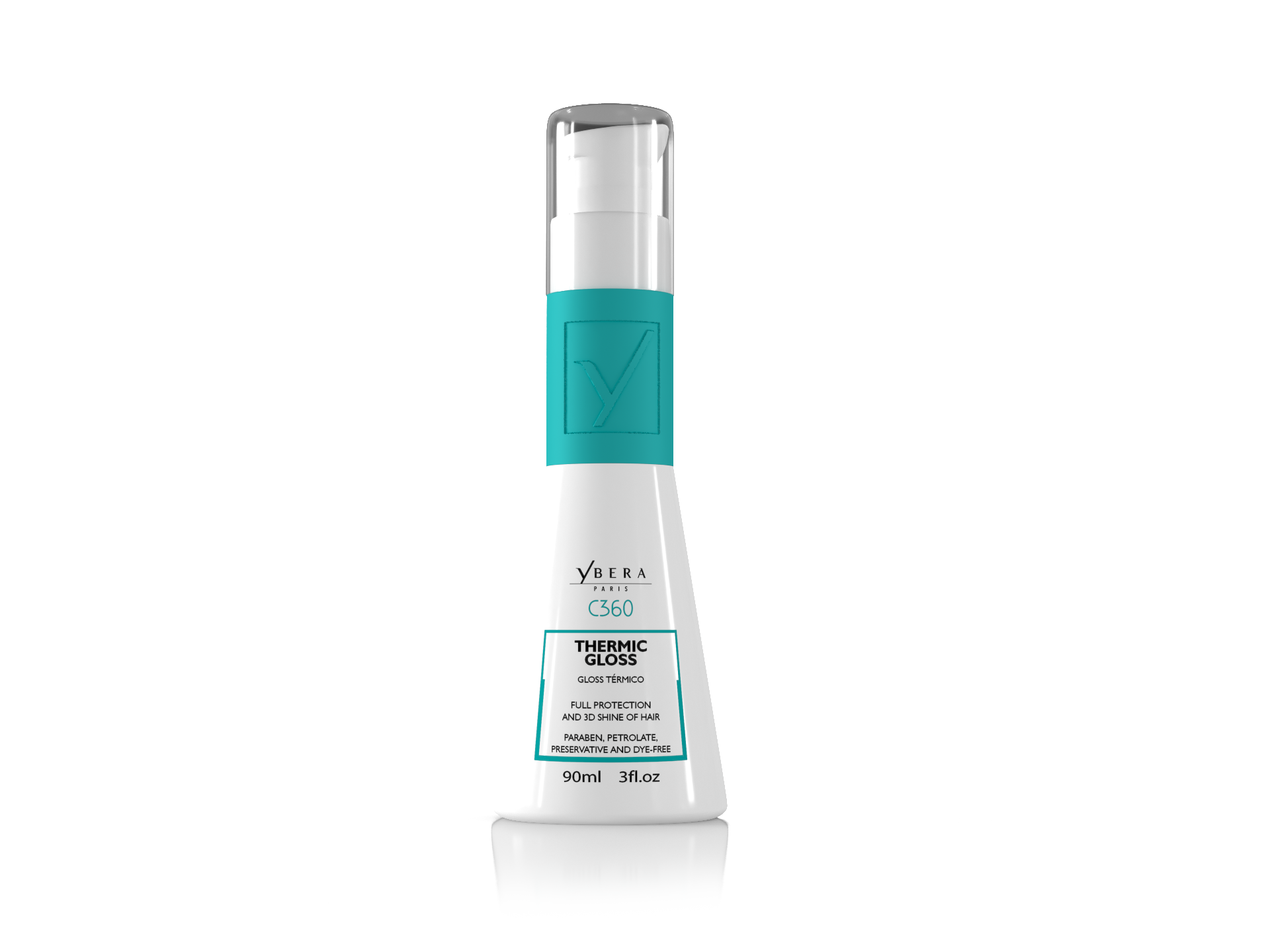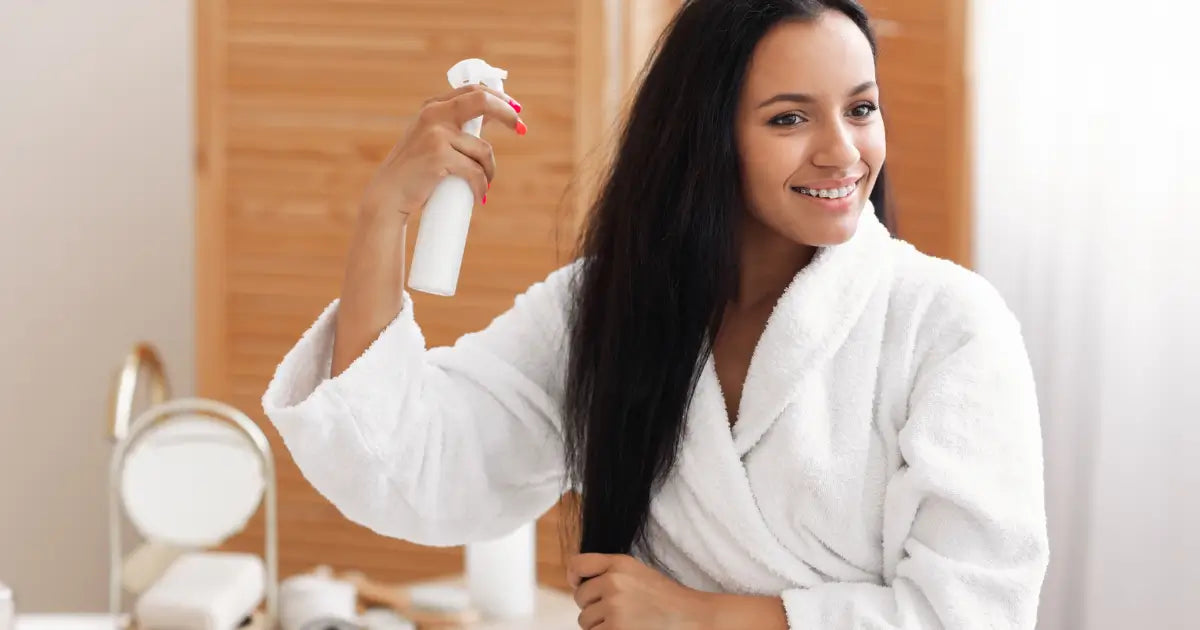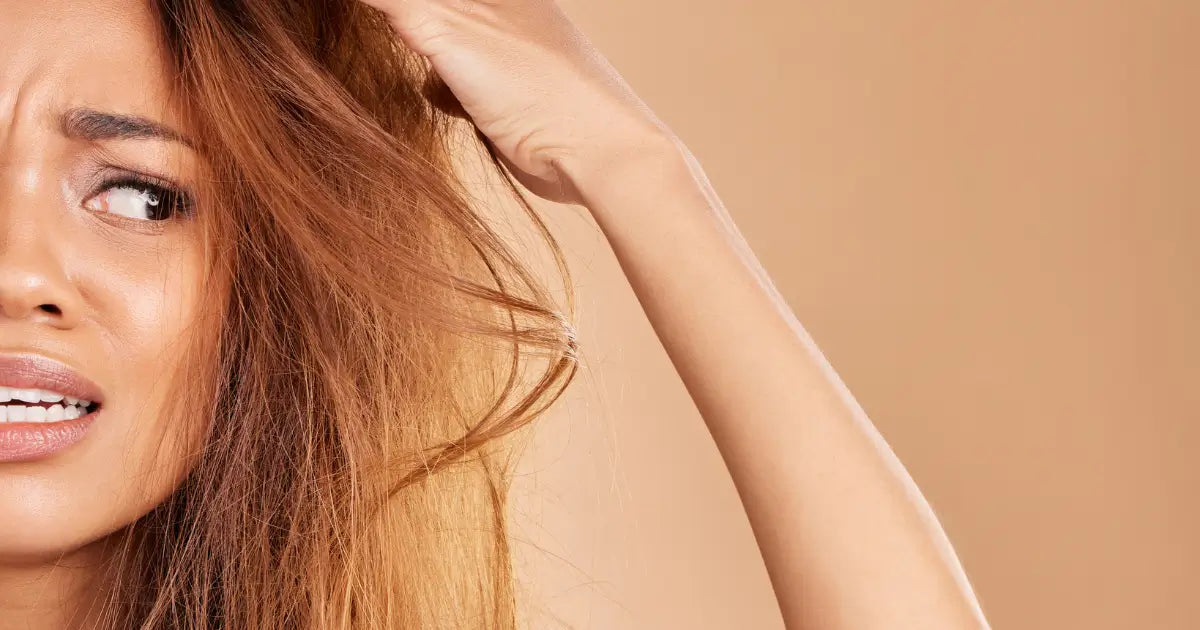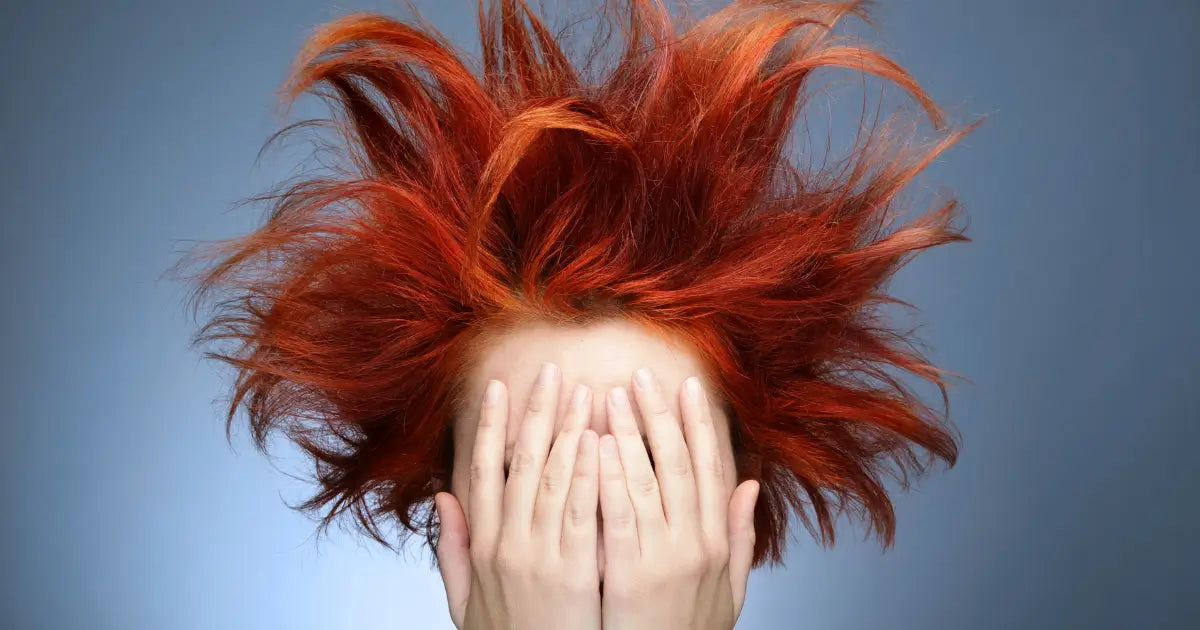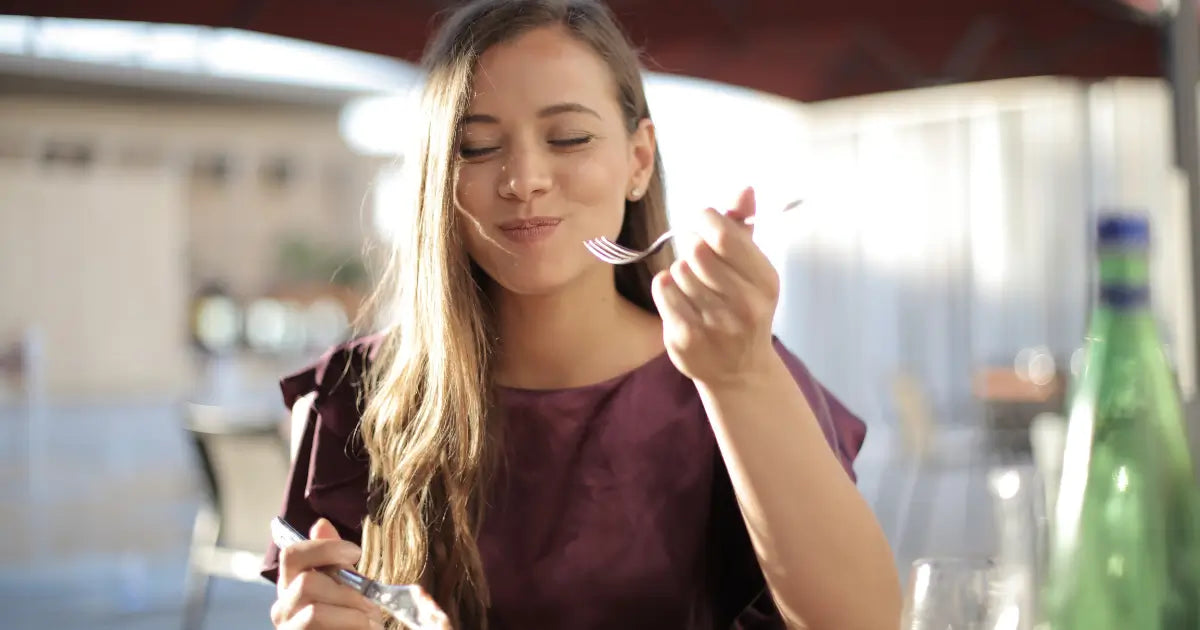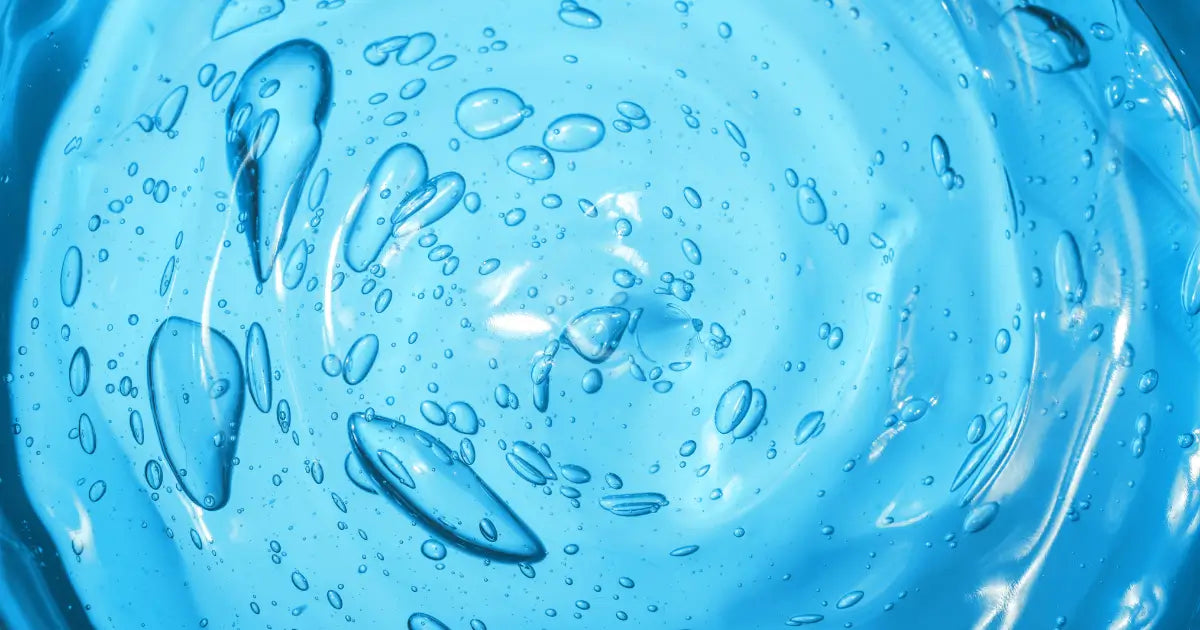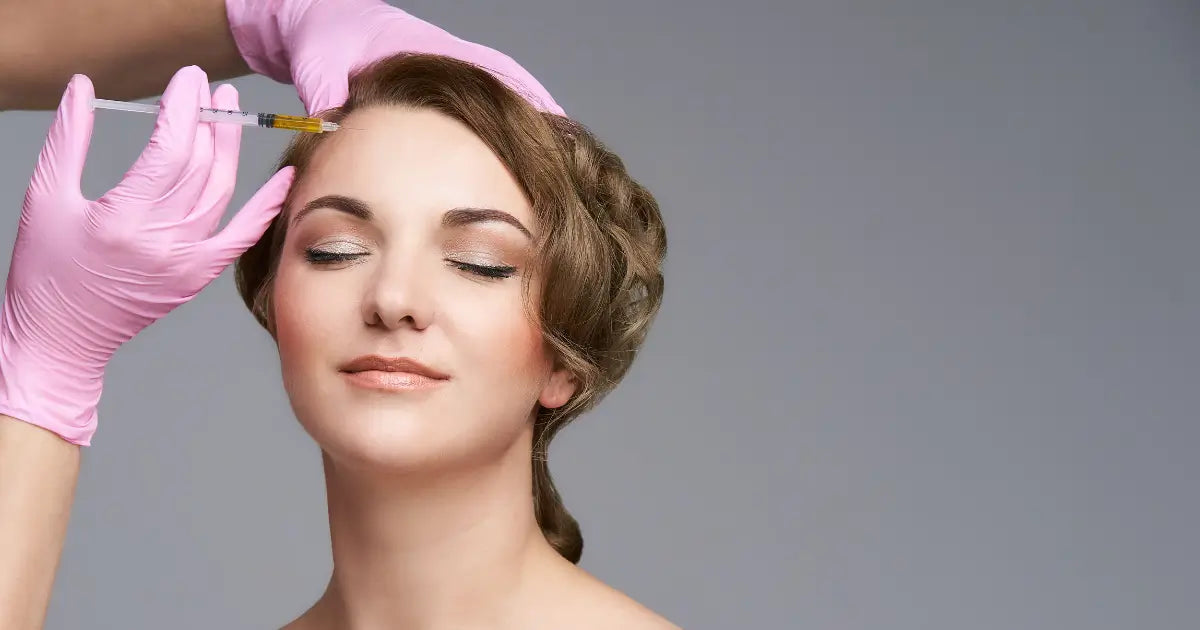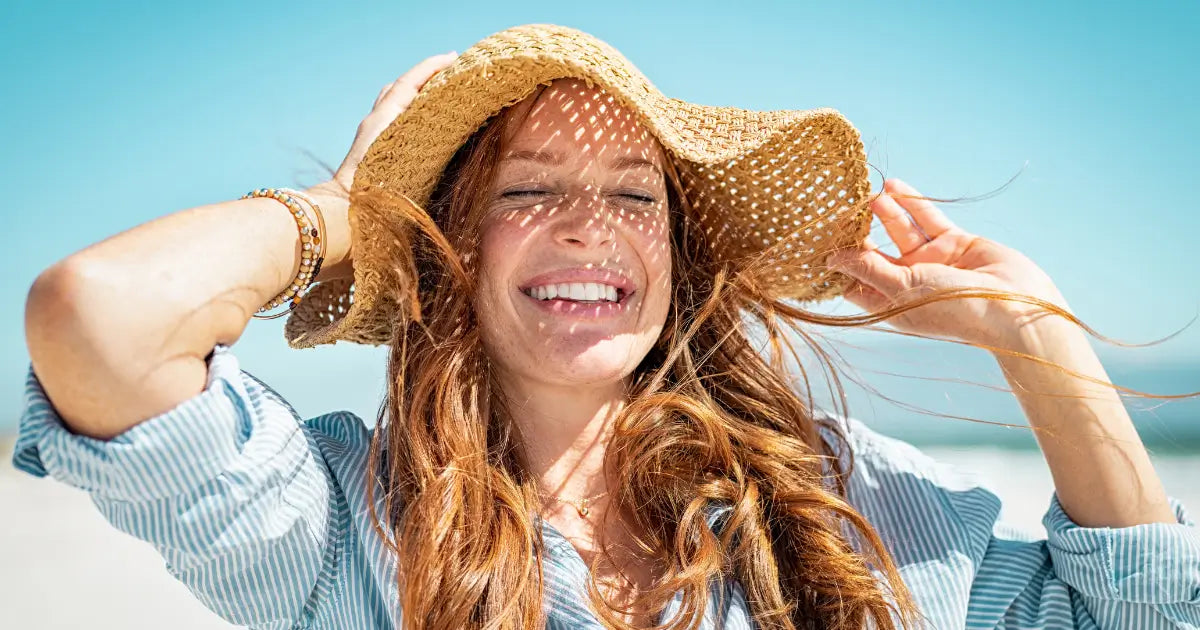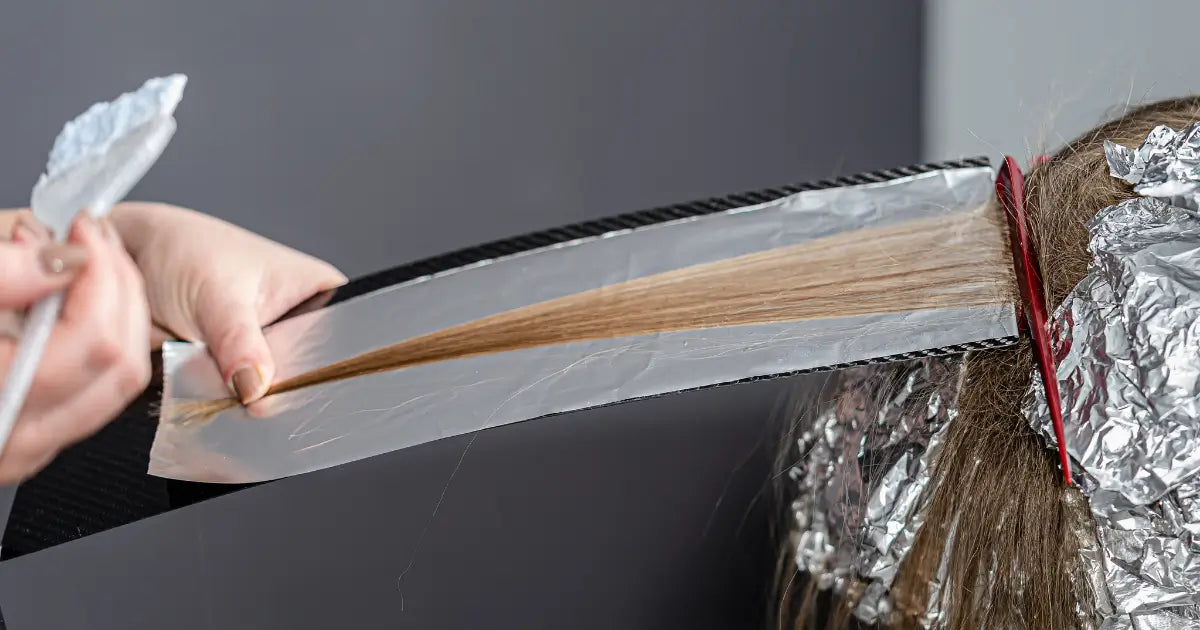The Gold Standard: Behind The Shine
Best Haircare Routine for All Hair Types in 2025
Today’s environment is harsher on our hair than ever before. Between pollution, dust, humidity, chemicals from styling, and heat tools, hair faces constant challenges. Simply washing with shampoo and conditioner is no longer enough to maintain healthy, vibrant hair.
To protect your strands and keep them looking their best, you need a well-rounded routine that suits your specific hair type and lifestyle. But with so many products on the market, it can be overwhelming — and even risky if you pick formulas with harmful ingredients.
The key is knowing your hair type and learning how to tailor each step in your routine for maximum benefit — whether your hair is curly, straight, wavy, or coily. This guide will help you understand what your hair truly needs, from cleansing and conditioning to styling and scalp care.
Best Haircare Routine for Hair
Step 1: Understand Your Hair Type
Before anything else, get to know your hair. Are your strands fine or thick? Straight or curly? Hair type influences how it reacts to moisture, products, and heat. For example:
-
Curly hair generally needs heavier moisturizing products and different styling techniques to avoid frizz and breakage.
-
Straight hair can often handle lighter formulas and less frequent deep conditioning.
Knowing your hair type lets you choose the right products and avoid wasting money on items that won’t work for you.
Step 2: Find the Right Washing Schedule
Washing too often strips your hair of natural oils, leaving it dry and brittle. Washing too little causes a buildup of dirt and oil, leading to scalp issues. For most hair types, washing 2–3 times a week with a sulfate-free shampoo strikes a good balance.
Tips for washing:
-
Use lukewarm water — hot water can damage your scalp and hair cuticles.
-
Apply shampoo primarily to your scalp, where oil accumulates, rather than the ends.
-
Follow with a moisturizing conditioner to replenish hydration and smooth strands.
-
Use a wide-toothed comb on wet hair to gently detangle and prevent breakage.
Step 3: Incorporate Dry Shampoo Wisely
Dry shampoo is a lifesaver for busy days when you don’t have time for a full wash. It absorbs excess oil and adds volume without water. But be careful not to overuse it — daily use can clog scalp pores and cause dryness or dandruff.
Step 4: Condition Every Time You Wash
Conditioner locks in moisture and makes hair easier to manage. For extra nourishment, use a hair mask twice a week, especially if your hair feels dry or damaged. Leave-in conditioners can be game-changers, particularly if you regularly use heat-styling tools.
Step 5: Choose Air Dry or Blow Dry, But Protect Your Hair
Whenever possible, air drying is gentler on your hair and prevents heat damage. If you blow dry, always apply a heat protectant spray first—especially before or after a keratin hair straightening treatment—and use low to medium heat. This helps maintain moisture and reduces breakage.
Step 6: Focus on Scalp Health
Your scalp is the foundation of healthy hair. An unhealthy scalp can lead to dandruff, irritation, or even hair loss. Here’s how to take care of it:
-
Use gentle, sulfate-free shampoos.
-
Avoid overwashing to keep natural oils balanced.
-
Massage your scalp regularly with natural oils like coconut or tea tree oil to improve circulation and nourish roots.
-
Consider using a scalp scrub to exfoliate and prevent buildup.
Step 7: Maintain a Healthy Diet
Hair health starts from the inside. Eating foods rich in protein, omega-3 fatty acids, biotin, zinc, and iron supports strong hair growth. Vegetables like carrots and spinach provide essential vitamins, while staying hydrated keeps strands flexible and less prone to breakage.
Step 8: Regular Trims and Avoid Over-Treating
Getting your hair trimmed every 6–8 weeks helps prevent split ends and promotes healthier growth. Also, if your hair is already chemically treated (bleached or colored), avoid frequent additional treatments that can cause damage.
Bonus Tips: Products and Treatments That Help
-
Hair serums: Seal moisture and add shine.
-
Keratin treatments: Smooth hair, reduce frizz, and strengthen strands by replenishing protein.
-
Silk or satin pillowcases: Reduce friction while sleeping, helping prevent breakage and frizz.
-
Avoid brushing wet hair: Wet hair is more fragile and prone to damage; use a wide-tooth comb instead.
Conclusion
A smart, personalized hair haircare routine is the best investment for healthy, beautiful hair in 2025. Focus on understanding your hair type and adapting your care accordingly — from washing and conditioning to styling and scalp care. Use quality products and protect your hair from heat and environmental damage. Consistency is key, and with patience, you’ll enjoy stronger, shinier, and healthier hair.
FAQs
How do I maintain healthy hair?
Follow a nourishing routine, eat a balanced diet rich in hair-healthy nutrients, stay hydrated, and avoid excessive heat and harsh treatments.
Is scalp care important?
Yes, a healthy scalp supports strong hair roots and prevents issues like dandruff and hair loss.
Does diet affect hair growth?
Absolutely. Vitamins and minerals from fruits, vegetables, nuts, and seeds nourish hair from within.
What are the best hair treatments?
Keratin treatments are excellent for restoring protein, smoothing hair, and reducing frizz.
What Causes Frizzy Hair? 10 Common Causes & How to Fix Them
Frizzy hair is a common concern for many people, regardless of hair type or texture. It’s often described as dry, rough, and unmanageable strands that seem to stand up or puff out uncontrollably. But what exactly causes frizz, and more importantly, how can you fix it?
In this detailed guide, we’ll explore the top 10 reasons why your hair gets frizzy and share practical, effective solutions to help you maintain smooth, healthy hair. Whether you have curly, wavy, or straight hair, understanding the science behind frizz will empower you to control it better—and decide when a keratin hair straightening treatment makes sense.
What is Hair Frizz?
Frizz occurs when the hair’s protective outer layer, known as the cuticle, becomes raised or damaged. This allows moisture from the environment to penetrate the hair shaft, causing it to swell and lose its smooth alignment. The result? Hair that looks dry, puffy, and difficult to manage.
Humidity is often blamed as the main cause of frizz, but several other factors play a role, including your hair type, styling habits, products you use, and even your diet.
Top 10 Causes of Frizzy Hair
1. Hot Showers
Many don’t realize that washing hair with hot water is one of the silent causes of frizz. Hot water strips your hair of its natural oils, which are essential for keeping strands hydrated and smooth. Without these oils, hair becomes dry, rough, and prone to frizz.
How to fix it:
Switch to lukewarm or cool water when washing your hair, and always follow up with a moisturizing conditioner to lock in hydration. Try using our Protect Control Conditioning Mask for deep hydration and frizz control.
2. Harsh Styling Products
Using styling products that contain sulfates, alcohol, or parabens can damage your hair. These ingredients raise the hair cuticle and strip moisture, leading to dryness and frizz.
How to fix it:
Choose sulfate-free shampoos and gentle styling products formulated for your hair type. Look for nourishing leave-in conditioners or curl creams to maintain moisture and control frizz.
3. Heat Styling Tools
Straighteners, curling irons, and blow dryers used frequently and at high temperatures can weaken the hair shaft. Without proper heat protection, the intense heat cracks the hair cuticle, resulting in frizz.
How to fix it:
Use heat styling tools sparingly and always apply a heat protectant spray before styling. Also, try to use the lowest effective heat setting. Discover safe styling tips in our How to Use a Diffuser on Curly Hair article.
4. Hair Type
Naturally curly or coarse hair is more prone to frizz because the natural oils produced by the scalp have a harder time traveling down the twists and turns of curls. This uneven moisture balance causes the cuticle to lift more easily in response to environmental changes.
How to fix it:
Add hydrating masks and deep conditioning treatments to your routine regularly. Oil treatments with argan or jojoba oil can also help lock in moisture.
5. Bad Styling Habits
Bad hair care habits, such as not trimming split ends regularly (every 8–12 weeks), rough brushing or combing, and tying your hair too tightly when wet, cause breakage and frizz.
How to fix it:
Trim your hair regularly, comb gently starting from the ends upwards, and avoid tight hairstyles, especially on wet hair.
6. Towel Drying
Using traditional terry cloth towels to dry hair creates friction, roughens the cuticle, and causes frizz and breakage.
How to fix it:
Switch to microfiber towels or soft cotton T-shirts to gently blot excess water. Allow your hair to air dry partially before applying styling products.
7. Humidity
Humidity is one of the biggest culprits behind frizz. When hair absorbs excess moisture from the air, the shaft swells and cuticles lift, causing hair to look puffy and unmanageable.
How to fix it:
Use anti-humidity sprays or silicone-based serums to seal the cuticle and block moisture from entering. Avoid going outside with wet hair as it attracts more humidity.
8. Lack of Natural Oils
Your scalp produces natural oils that protect and hydrate hair. Washing hair too often or stripping these oils causes dryness and frizz.
How to fix it:
Avoid daily washing and incorporate natural oils such as argan, almond, or jojoba oil into your hair care routine to replenish moisture.
9. Excessive Hair Washing
Frequent washing removes the protective oils and disrupts the scalp’s natural moisture balance, making hair dry and frizzy.
How to fix it:
Limit washing to 2–3 times a week and use a gentle sulfate-free shampoo. On non-wash days, dry shampoo can help maintain freshness without stripping oils.
10. Skipping Heat Protectants
Using heat styling tools without a heat protectant spray exposes hair to direct damage, cracking the hair shaft and causing frizz.
How to fix it:
Always apply a heat protectant spray before using any heat tools to create a protective barrier and reduce damage.
Additional Tips to Prevent and Manage Frizz
-
Hydrate: Drink plenty of water to keep your hair and body hydrated.
-
Sleep on silk: Use silk or satin pillowcases to reduce friction that causes frizz.
-
Trim regularly: Removing split ends prevents frizz from spreading.
-
Protective hairstyles: Tie hair back loosely or use protective styles on high humidity days.
Conclusion
Frizzy hair is mainly caused by environmental factors such as humidity and heat, along with your hair care habits and hair type. The good news? It’s manageable. By making simple changes like washing hair with lukewarm water, avoiding harsh products, protecting your hair from heat and humidity, and using moisturizing treatments, you can reduce frizz and keep your hair smooth and healthy.
For more personalized hair care advice and keratin treatment solutions, visit our Hair Treatment for Smooth Hair page and see the best shampoos for keratin treated hair.
FAQs
What is frizzy hair?
Frizzy hair is dry, rough hair with raised cuticles that appear puffy or unmanageable due to moisture imbalance and damage.
Does washing hair too often cause frizz?
Yes, it strips natural oils essential for hair hydration, leading to dryness and frizz.
How can I control frizz naturally?
Switch to sulfate-free shampoos, use hydrating hair masks, natural oils, and avoid excessive heat styling.
Is humidity really the main cause of frizz?
Humidity plays a big role, but other factors like hair damage, products, and hair type also contribute.
Bad Keratin Treatment: How to Spot & Fix a Treatment Gone Wrong
Are you suffering from a bad keratin treatment? A bad keratin treatment is a nightmare because it can turn your hair into a frizzy disaster. Keratin treatment occurs in a wide range. They are highly known for their ability to reduce frizz to give a healthy and sleek look to your hair.
However, the wrong application of keratin is the use of the wrong products on the wrong hair type. In this article, you will learn about the reasons for wrong keratin treatment and how to fix it.
How to Recognise a Bad Keratin Treatment
The first thing is that you must know what bad keratin is. Keratin treatment can make your hair smooth by providing your hair and scalp with essential protein and hydration. However, a bad keratin treatment prevents smooth and shiny hair and leads to unusual hair texture. Here are some symptoms of a bad keratin treatment.
1. Unusual Hair Texture or Breakage
One of the basic and most prominent signs of bad keratin treatment is frequent hair breakage and unexpected hair texture. The purpose of keratin treatment is to make your hair soft and smooth.
However, due to bad keratin treatment, your hair becomes more sticky and rough. Also, your hair starts to break easily. If your hair is frequently breaking, then you must consider fixing your hair and getting treatment.
2. Excessive Hair Shedding
Hair shedding is another sign of bad keratin treatment. Shading of a few hairs daily is normal, but in case you’re having excessive shedding after treatment, then it’s time to take a higher step. This also happens due to the use of excessive flat ironing during the process of locking in the moisture. When protein is overloaded in your roots, it makes your roots extremely fragile, leading to excessive hair shedding.
3. Scalp Irritation or Burning
If you’re feeling itchy or burning after getting a keratin hair straightening treatment, then you must consult your specialist because it indicates bad keratin treatment. Use of the wrong keratin product or a high level of formaldehyde causes itching and often burning in the scalp.
It also affects hair health and is highly harmful to a person. Now you can also find formaldehyde-free keratin options, which are safer for hair, skin, and nail treatment.
4. Uneven Straightening or Patchy Results
During the process of keratinizing, it plays a crucial role. After loading the hair with protein, the moisture is locked in with the help of a straightener. However, if you have a few straightened hairs in an area that is still wavy or frizzy, then you must know that your keratin treatment has gone wrong.
It’s a sign of bad keratin treatment because a professional Brazilian keratin, after application of keratin, will never leave your hair with patches or inconsistencies.
Why Keratin Treatments Go Wrong
There are several reasons for a bad keratin treatment. Let’s explore a few reasons.
1. Wrong Product for Your Hair Type
The wrong use of hair products leads to bad keratin treatment. In the market, different types of keratin treatments exist, and not all treatments are the same and equal for all people. Everyone has a different hair texture and type. Not all keratin treatments are for every hair type. Each formula caters needs of different hair conditions and, if applied incorrectly, leads to destructive issues.
2. Inexperienced Hair Stylist
Your hairstylist matters the most. Keratin is not just about applying protein. It’s a chemical treatment that requires precision and great care; otherwise, you can suffer from damaged hair.
3. Low-Quality or Harsh Chemicals
Use of low-quality or harsh chemical keratin is one of the common reasons for bad keratin treatment. Often, people choose cheap keratin formulas containing formaldehyde, which causes different side effects to physical and mental health. However, using treatments with glyoxylic acid is much safer than formaldehyde.
Fixing a Bad Keratin Treatment
If you found any sign of bad keratin treatment, then you must know how to fix it. In this advanced world, everything is possible. Following some tips—like using a sulfate-free shampoo for keratin treated hair, minimizing heat, and deep conditioning—will help you overcome the effects of bad keratin treatment.
1. Deep Moisture & Protein Rebalance
If you are suffering from frizzy and dry hair even after getting keratin treatment, then you must use moisturizer. Using moisturizer will rebalance the effect of protein with the required level of hydration.
Use a deep conditioning mask with hydrating ingredients like shea butter and argan oil. These will help you in soothing your hair strands, overcoming the effect of spoiled keratin treatment.
2. Clarify and Detox Gently
Sometimes, detoxifying your scalp gently can help you overcome the effects of bad keratin treatment. You can use a sulfate-free cleanser or shampoo once a week to remove overloaded protein from your roots. In this way, you will remove the excessive buildup, and your hair will be able to breathe again.
3. Trim Split Ends Promptly
In case you are suffering from split ends and frizzy hair after a bad keratin treatment, then you must cut split ends right when they appear. Cutting them will prevent further breakage. Also, removing debt will lead to healthy hair growth.
4. Use Strengthening Leave-Ins and Oils
In case you are having extremely damaged hair after a keratin treatment, then you can fix it by using appropriate oils and moisture. With a bad keratin treatment, your hair becomes extremely dry and brittle. And the best solution for that is to hydrate your hair by using natural oils like coconut, castor oil, or argan oil.
These also have the ability to restore elasticity of the hair and lock in moisture. Once the moisture is restored, your hair will start reviving back to its original condition. Ensure you apply a lightweight conditioner and leave it in your hair for a few minutes to strengthen your hair roots.
5. Consult a Professional
If the damage is unfair and incomprehensible, then the best thing is to consult a professional. They diagnose your issue, considering your hair type, and will suggest a solution considering the loss.
Things to Consider Before Getting a Keratin Treatment
If you are planning to take a keratin treatment, then you must start researching how it works. Always consider the following things to avoid bad keratin treatments:
-
Research the type of keratin you want according to your hair. Take the help of a hair professional to understand your hair type. If you have extremely curly or straight hair, then you must know a lightweight keratin product suitable for you.
-
Know your needs, why you are getting the treatment, what your goal is, and how you will achieve it.
-
Look for keratin treatments with formaldehyde-free options. Those having glyoxalic acid in them are much safer and provide robust results.
-
Research the brand. FG Haircare provides you with the best solution for keratin treatment.
-
Always choose your hairstylist carefully. Share your requirements and then get the treatment.
-
If you have previously taken any chemical treatment, then it is better to avoid keratin treatment. You must take a gap of at least six months between any chemical processes so your hair can have enough time to recover.
Conclusion
Nothing is more frustrating than a bad keratin treatment. Your hair is precious, so always research before trying any chemical process. If your treatment goes wrong, focus on moisturizing, trimming split ends, and using the right products.
Ybera offers a gentle, formaldehyde-free Brazilian keratin treatment that smooths and strengthens hair safely, helping you achieve frizz-free, shiny results without damage. Treat your hair right with trusted products that truly care.
FAQs
What is a bad keratin treatment?
A bad that leaves your hair extremely dry, JV, messy, and harsh. They make your hair fluffy and unmanageable in poor condition. A bad keratin means that you’re here to suffer the worst even after getting keratin treatment.
How to overcome the effects of bad keratin treatment?
You can overcome the effects of bad keratin by using a sulfate-free shampoo and conditioner once or twice a week. Using moisturizing products with natural oils like argan oil and almond oil can help your hair stay hydrated.
What are the most essential things to consider while getting keratin treatment?
There are different things that you must consider while getting a current treatment, such as considering your hair type, choosing a reputed hair care brand, and choosing a professional hairstylist.
Which brands provide trusted and reputable hair care products?
There are different brands that can provide you with the best keratin products, such as Ybera Haircare. It ensures to provide you with high-quality hair products.
Is keratin safe for all hair types?
Although keratin is safer for all hair types, you must consult a hair expert to understand your hair type and the suitable keratin treatment according to your hair.
Keratin-Rich Diet: 10 Foods That Boost Your Body's Keratin Levels
Fitness comes with a healthy diet. Whether you want to achieve glowy skin or nourishing hair, adopting a healthy diet should be your first priority.
Nowadays, people prefer taking chemical treatments for instant results. However, you will be amazed to know that you can achieve a similar effect by adding keratin-rich foods to your diet.
A keratin-rich diet provides your body with the necessary building blocks. These blocks are helpful for natural hair improvement. Let's have a detailed discussion on the 10 best keratin-rich foods and their benefits:
Why Keratin Matters in Hair Health?
Keratin acts as a building block for the nourishment of the outer layer of your hair, nails, and skin. It’s a naturally occurring ingredient of your body. However, stress, poor nutrition, and excessive chemical hair treatments can disrupt this natural formation. If you’ve ever wondered “is keratin treatment good for hair”, remember that salon treatments work on the surface while nutrition supports production from within.
Top 10 Foods for a Keratin-Rich Diet
A keratin-enriched diet not only improves your hair follicles but also strengthens your hair roots and its texture. Consider the 10 foods below, which have better hair growth and hair volume:
1. Eggs — A Perfect Protein Source
Eggs are one of the most perfect sources for the production of keratin in your body. Eggs are a great source of protein and amino acids that help the body produce natural structures like keratin in your body. Eggs also contain different vitamins, nutrients, and biotin, which directly lead to keratin synthesis.
2. Sweet Potatoes — Rich in Beta Carotene
Sweet potatoes contain powerful antioxidants that are helpful for your body. It contains beta carotene, which converts antioxidants from the body into vitamin A. Vitamin A directly supports the production of sebum in the body.
Sebum is an essential natural oil present on your scalp. It plays a significant role in keeping your hair moisturized. It not only supports hair growth but is also responsible for the production of new skin and hair cells. You can add it to your keratin-rich diet for effective results.
3. Salmon — Full of Omega-3 Fatty Acids
Your body needs omega-3 fatty acids along with other nutrients. These nutrients are essential for reducing inflammation on your scalp. Omega-3 fatty acids are helpful in the production of keratin. So add salmon to your diet because it's a nutritious resource.
4. Sunflower Seeds
If you are looking for a keratin-rich diet, then you must not forget to add sunflower seeds to your diet. Sunflower seeds contain vitamin E, zinc, and selenium. All these nutrients are highly helpful in protecting your hair strands from external or internal damage.
Moreover, it helps in enhancing the health of your scalp. Taking a handful of sunflower seeds regularly can support the production of keratin in your body. Moreover, sunflower seeds can be a crunchy snack that will bring prominent results to your hair shaft. It will remove the dryness and prevent hair breakage.
5. Carrots — For Hair That Shines
Carrots are also a great source of beta-carotene. Taking healthy fruits and vegetables supports the production of keratin in your body, leading to stronger hair and glowing skin. Eating carrots daily will nourish your hair and build its overall resilience. Carrots are also a good source of vitamins, which are highly essential for your overall health.
6. Spinach — A Green Leafy Powerhouse
Most of the green vegetables contain iron, vitamin C, vitamin E, and folate. All these are essential nutrients that are helpful for regulating blood cells and oxygen. Regulation and proper flow of blood and oxygen for your hair follicles are a basic requirement for healthy hair growth. It means spinach and green leafy vegetables are a keratin-rich diet that increases overall hair strength.
7. Avocados — Source of Healthy Fats
Avocados are a great source of keratin. They are rich in vitamin E and other healthy fats that support a healthy scalp and improvement in hair texture. Avocados are helpful in maintaining the natural oils in your hair, which leads to improvement in hair density. Add avocados to your diet, and wait for your hair to get silky and smooth.
8. Chicken — Lean Protein for Strong Hair
Consumption of chicken can also create a big difference in your hair health. Keratin is a protein, and there are so many ways of getting protein through your diet. Chicken and all other meats are highly packed with essential proteins. Whether you eat grilled chicken or baked chicken, it’s a perfect source of supporting keratin production in your body.
9. Mangoes — Vitamins for Scalp and Hair
If you’re looking for a keratin-rich diet, then considering mangoes is the best option. Mango is a flavored food, but it’s just like a healthy dose of vitamins E and C and other essential nutrients.
These vitamins support collagen production that keeps your scalp and head protected. Also, it supports keratin formation. So, if you want natural hair production and growth without the need for chemical treatments, then focus on a keratin-rich diet. Consume as much keratin-rich food as you can for efficient results.
10. Oats — Whole Grain Goodness
Whole-grain seeds and oats are always full of fiber and essential vitamins. Oats also contain fiber, iron, and biotin. However, it is an indirect way of supporting keratin production. It is because it helps in improving your body's energy levels.
If you have improved energy levels without any nutritional deficiency, your head will naturally become stronger, and your hair will have a smooth texture. So add oats to your keratin-rich diet for your hair nourishment.
Tips to Maintain Keratin Levels Naturally
On your journey of intaking a keratin-rich diet, you must also consider some tips to maintain keratin levels in your body naturally.
-
The first and most essential thing is that you must not stay dehydrated. You can never achieve smoothness in your hair if you stay dehydrated for a long time. Remember that the keratin-like look is only possible with the support of water and essential moisture.
-
Secondly, you must limit yourself to stronger and harsher chemicals.
-
Avoid taking unhealthy food, such as junk food or fast food, because they may produce unfavorable conditions for your body that can prevent the production of keratin.
-
Ensure proper sleep on time because the hair growth and repair process requires a proper sleep cycle for keratin synthesis.
-
Use organic and natural hair products. You can use FG Haircare hair products, as they are highly organic and chemical-free hair products and support keratin production and hair growth naturally.
-
Avoid overwashing your hair. Overwashing hair strips off the building of essential hair oil, leading to dryness. Moreover, reduce the use of heat-styling equipment, as it highly affects hair health, and always apply a heat protectant spray before any blow-drying or ironing
Conclusion
Smooth, silky, and shiny hair is what everyone dreams about. Instead of getting external treatment, one must try achieving the hair goals naturally. Adopting a keratin-rich diet is one of the best ways to achieve your hair goals.
Keratin not only strengthens your hair but also supports hair texture and hair growth while increasing the keratin level, causing smoothness and an extremely sleek look. So add keratin-rich fruits and vegetables to your diet, such as mangoes, avocados, carrots, chicken, oats, spinach, sunflower seeds, salmon, sweet potatoes, and eggs. These foods support keratin production either directly or by providing the nutrients your body needs to produce it.
If you're looking for a more direct keratin boost, consider combining this diet with a quality keratin treatment.
FAQs
How to increase keratin in the body naturally?
You can increase keratin in your body naturally by adding keratin-rich foods into your diet. Your body has natural structural proteins known as keratin. These proteins make up a significant part of your body tissues, cells, and nails.
Can eating keratin-rich foods help with hair problems?
Yes, maintaining a healthy diet, especially a keratin-rich diet, can help in overcoming hair problems like damaged hair, flaky scalp, and irritations. Moreover, it provides you visible results by providing a shiny and sleek look to your hair.
What are the benefits of having a keratin-rich diet?
Eating keratin-rich diets increases the level of keratin in your body, which is necessary for keeping a certain hydration level. Keratin is necessary for nourishment of hair and healthy nail and tissue growth.
Hyaluronic Acid For Hair: Benefits & How To Use
If your hair constantly feels dry, frizzy, or rough no matter how many products you try, you're not alone. Heat styling, color treatments, sun exposure, and even hard water can gradually strip moisture from your strands, leaving them dull and brittle. While oils and rich conditioners may help temporarily, they often sit on the surface without addressing the root cause. This is where hyaluronic acid becomes a true game-changer.
Known for its remarkable ability to retain moisture, hyaluronic acid penetrates the hair fiber to deeply hydrate, smooth, and restore softness — all without weighing your hair down or leaving it greasy.
What Is Hyaluronic Acid and Why Use It on Hair?
Hyaluronic acid is a moisture-binding molecule that can hold up to 1,000 times its weight in water. When used in hair haircare, it helps draw moisture into the hair shaft and lock it in — something that’s essential for keeping strands flexible, smooth, and strong.
When hair loses moisture, it becomes rough, dull, and more prone to breakage. By replenishing hydration at the core, hyaluronic acid helps strengthen hair, reduce frizz, and improve overall texture and shine. It also supports a healthier scalp, which is essential for hair growth and long-term strength.
Signs Your Hair Needs Hyaluronic Acid
Your hair may benefit from hyaluronic acid if it feels dry or rough to the touch, has constant frizz, or breaks easily during brushing. If you’re considering alternatives, keratin treatments for frizzy hair can also help with these issues.
-
It feels dry or rough to the touch
-
You’re dealing with constant frizz or flyaways
-
It breaks easily during brushing or styling
-
Your scalp feels tight, itchy, or flaky
-
Your hair looks dull, lifeless, or lacks bounce
Unlike heavy treatments, hyaluronic acid absorbs quickly and binds moisture inside the hair shaft, offering noticeable improvement without build-up or residue.
Key Benefits of Hyaluronic Acid for Hair
Hyaluronic acid has gained recognition for its powerful benefits for hair. Throughout the styling process, hair is exposed to various conditions — from chemical treatments to frequent heat styling — which can strip away its natural beauty. Hyaluronic acid not only meets the hydration needs of your scalp but also enhances the overall appearance of your hair, leaving it shiny and healthy-looking. Now, let’s dive into the detailed benefits of hyaluronic acid for your hair.
1. Hydration Without Heaviness
Hyaluronic acid delivers intense moisture without making hair greasy or limp. This makes it ideal for all hair types — including fine, curly, or color-treated hair.
2. Tames Frizz and Smooths Flyaways
Hydrated hair is less reactive to humidity. With consistent use, hyaluronic acid helps reduce puffiness and frizz, keeping your style smoother for longer.
3. Adds Shine and Softness
Moisturized hair reflects light better. Hyaluronic acid helps restore your hair’s natural shine while making it feel softer and silkier.
4. Improves Strength and Elasticity
When hair is dry, it loses flexibility and becomes more prone to snapping. Hyaluronic acid boosts the elasticity of each strand, helping it bend and move without breaking.
5. Calms and Moisturises the Scalp
A healthy scalp is essential for healthy hair. Hyaluronic acid helps maintain the moisture balance of your scalp, easing dryness, flaking, and discomfort.
How to Use Hyaluronic Acid in Your Hair Routine
1. Apply on Damp Hair After Washing
After shampooing and towel-drying your hair, apply a few drops of FG Haircare’s Hyaluronic Acid Hair Serum to the mid-lengths and ends. This is where hair tends to lose the most moisture. Working it through damp hair helps lock in hydration more effectively.
2. Massage into the Scalp for Scalp Care
If your scalp is feeling dry or tight, apply a small amount directly to the roots and gently massage it in. This can help soothe irritation and improve the condition of the scalp over time.
3. Boost Your Conditioner
Add a few drops of the serum to your regular conditioner to give it an extra boost. Let the mixture sit on your hair for a few minutes before rinsing to help seal in moisture.
4. Use as a Leave-In for Extra Dry Hair
For hair that feels extra dry or damaged, use the serum as a leave-in treatment. Apply it to damp hair before bed and style as usual the next day. It helps soften and smooth hair overnight.
Tips for Best Results
-
Use on damp, not dripping wet hair
-
Focus on mid-lengths and ends, where hair tends to be driest
-
Apply consistently 2–3 times a week for visible improvement
-
Avoid over-applying on oily-prone roots
Conclusion
Hyaluronic acid is more than a trend — it’s a deeply effective ingredient that delivers hydration exactly where your hair needs it most. Whether you're struggling with frizz, breakage, or a scalp that feels tight and dry, incorporating this moisture-binding molecule into your hair haircare routine can lead to softer, shinier, more resilient strands.
What Is Hair Botox and Why Is Everyone Talking About It?
Do you know why everybody is talking about Botox hair treatment? Botox hair treatment isn’t the same as traditional Botox involving injections and needles. Instead, it’s a chemical-free, restorative formula designed to nourish and repair damaged hair.
This treatment uses a blend of proteins, amino acids, antioxidants, and vitamins to revive weak and porous hair strands by deeply penetrating the hair cuticle. It’s no wonder influencers and hairstylists everywhere are raving about it. Read on to discover why hair Botox is creating such a buzz—and whether it’s worth trying.
If you’re curious how this compares to other popular smoothing treatments, check out our guide on the different types of keratin treatments to see which one suits your hair best and take a look at which is the best shampoo after keratin treatment is.
What Is Hair Botox?
Hair Botox is not made from botulinum toxin, like the facial Botox you're familiar with. Instead, it's a name used to describe the smoothing and revitalizing effects it has on your hair—much like how skin Botox smooths wrinkles.
The treatment is packed with beneficial ingredients such as proteins, amino acids, vitamins, lipids, and antioxidants. These nutrients work together to repair broken, brittle, or porous hair strands, restoring their strength, elasticity, and shine.
This non-invasive treatment has become popular because it delivers visible results without using harsh chemicals or causing damage. Whether your hair is dry, frizzy, over-processed, or simply dull, Hair Botox promises to breathe new life into your locks.
How Does Hair Botox Work?
Hair Botox isn’t like other chemically intense treatments. Think of it as a supercharged hair mask that delivers long-lasting results—without formaldehyde or other harsh ingredients—making it suitable for all hair types. Here’s how it works:
1. Hair Prep
The process starts with a thorough wash using a gentle cleanser to remove dirt and product buildup. This step opens the hair cuticles, prepping them to absorb the nutrients.
2. Application
The Botox formula is then applied like a mask from roots to tips. It’s left to sit for 30 to 90 minutes, depending on hair length and condition, to allow deep penetration into damaged areas.
3. Sealing
Heat is used to seal the treatment into the hair shaft, helping the ingredients bond with the hair strands for long-lasting effects.
4. Rinsing
After sealing, the hair is rinsed thoroughly to remove any residue. Once dried—whether air-dried or blow-dried—your hair is ready to style, looking noticeably healthier and smoother.
Key Benefits of Botox Hair Treatment
Hair Botox offers a wide range of benefits, which is why it’s become a go-to solution for anyone looking to improve hair health and manageability. Here’s what it can do:
Deep Hair Repair
This treatment goes beyond the surface to restore the hair’s inner structure. It fills gaps in weak strands, strengthens the cuticles, and revives dry, dull hair. If you’re comparing options for smoother, frizz-free hair, you might also want to explore the benefits of keratin treatment, another salon favorite known for its long-lasting sleekness.
Frizz Reduction
Frizz, especially in humid weather, can ruin any hairstyle. Botox treatment helps tame frizz by smoothing the hair cuticle, making your hair appear sleek and polished.
Natural Shine
One of the standout features of Botox-treated hair is its restored shine. Smooth cuticles reflect more light, giving your hair a glossy, vibrant appearance.
Flawless, Manageable Hair
Botox treatment simplifies styling. With straighter, more cooperative hair, you can achieve any look quickly—no need to struggle with knots or uneven texture.
Safe for All Hair Types
Free from formaldehyde and harsh chemicals, Botox hair treatment is safe for curly, straight, wavy, oily, or dry hair. That’s why it’s so widely recommended.
Is It Safe to Get Hair Botox?
Yes, it’s one of the safest treatments available. Dermatologists and hair professionals alike support Botox hair treatment as a non-toxic, effective option for repairing damage—even on color-treated or chemically processed hair.
It’s also suitable for people with sensitive scalps or allergies, as it doesn’t interfere with natural scalp functions.
Here’s who should consider it:
-
Those with heat-damaged or brittle hair
-
Anyone with chemically treated or bleached hair
-
People dealing with split ends, frizz, or dullness
-
Anyone who simply wants healthier, flawless hair
Even people with sensitive scalps or allergies can try Hair Botox, as it doesn’t interfere with scalp health. Many dermatologists support its safety and effectiveness.
How Long Does It Last?
On average, hair Botox results last 2 to 4 months, depending on the products used and your hair care routine. To extend the treatment’s effects, consider the following tips:
-
Use sulfate-free shampoo and conditioner
-
Avoid frequent heat styling
-
Sleep on a silk pillowcase
-
Incorporate weekly nourishing hair masks
While Botox hair treatment is not permanent, regular care helps preserve its benefits for longer.
Can You Do Hair Botox at Home?
Yes, at-home Botox kits are available from many reputable brands. However, for best results, it’s recommended to have the treatment applied by a professional stylist, especially if your hair is severely damaged or chemically treated.
Conclusion
Hair Botox is more than a trend—it’s a revolution in haircare. Free from toxic chemicals and suitable for all hair types, it addresses common hair issues like frizz, dullness, breakage, and dryness while also enhancing shine and manageability.
Whether you have curly, straight, bleached, or color-treated hair, Botox treatment is a safe, effective, and long-lasting solution.
If you’re ready to give your hair a fresh, flawless look, Botox treatment is definitely worth the hype.
7 Tips for Healthy and Gorgeous Summer Hair
Do you know the best summer hair care tips for maintaining healthy and shiny hair? Seasonal change can badly impact your hair's health—especially in summer. The sun’s heat can take away the natural shine of your hair, giving it a dull and lifeless look. In summer, your hair is exposed to intense sunlight, sweating, and frequent washing. All of these can damage your strands.
If you want to maintain healthy hair during the warmer months, it’s essential to follow a proper hair care routine. Apply natural oils like argan oil and protect your hair from severe weather conditions. Moreover, use organic and chemical-free hair products.
7 Most Useful Tips for Healthy Summer Hair
During summer, your hair requires extra attention. Therefore, you must know the essential summer hair care tips for shiny and gorgeous hair. Here are some helpful tips that can support your hair health during the hot season:
1. Keep Your Hair Moisturised
One of the most important summer hair care tips is to keep your hair well-moisturized. Due to excessive heat, your hair loses moisture quickly. When the water content is drained from your hair, the strands become weak, dull, and dry.
That’s why it’s important to keep your scalp and hair hydrated. Ensure you use shampoos with gentle moisturizing ingredients so they don’t strip your hair of its essential natural oils. Choose a shampoo that includes hydrating agents. Most importantly, increase the use of conditioner after every hair wash to lock in moisture and restore softness.
Pro Tip: Try Protect & Control Conditioning Mask for a deep conditioning treatment that restores shine and strength.
2. Avoid Frequent Heat Styling
Due to the harsh summer heat, your hair becomes thin and dry. That’s why it’s crucial to take a break from heat styling. Minimize the use of hair straighteners, curling irons, and blow dryers. Exposure to these heat styling tools can further damage your hair.
Since your hair already endures high temperatures in the summer, adding more heat can make it weak, fragile, and prone to breakage. Avoid using blow dryers frequently. If you need to use one, keep the heat setting low—or better yet, let your hair air dry after washing.
3. Avoid Exposure to Sun
Whether it’s your skin or your hair, both need protection from harmful UV rays. During summer, UV rays become more intense and can seriously damage your hair. They can make your hair dull and brittle and cause your hair color to fade more quickly.
Therefore, you must protect your hair from direct sun exposure. Use hair sprays or serums that offer UV protection. You can also wear a scarf or hat to shield your hair from the sun. Simply washing with shampoo and conditioner is no longer enough to maintain healthy, vibrant hair. If you’re weighing keratin treatment vs brazilian blowout, the right choice depends on hair type, desired longevity, and ingredient sensitivity.
4. Don't Wash Your Hair Too Often
Another important summer hair care tip is to avoid overwashing your hair. Frequent washing strips away the natural oils from your scalp, leaving it dry and prone to damage. It can even lead to dandruff, which weakens the roots and causes hair fall.
In summer, it might be tempting to wash your hair daily due to excessive sweating, but you should maintain at least a two-day gap between washes. This helps retain your scalp’s natural oils and promotes healthier hair. If your hair feels frizzy or dry between washes, you can use just a conditioner to keep it soft and manageable.
5. Trim Your Hair
Trimming your hair regularly is one of the most effective summer hair care tips that can make a visible difference. In summer, your hair tends to appear rough and dry, especially at the ends. This dryness leads to split ends, which can restrict hair growth.
If not trimmed, split ends can travel further up the hair shaft, giving your hair a messy and unhealthy appearance. It’s best to trim your hair every 6 to 8 weeks to keep it looking clean, fresh, and healthy. Regular trims also make styling easier and help prevent further damage.
6. Use Natural Oils
One of the best summer hair care tips includes the use of natural oils. These oils strengthen the roots and give your hair a soft, shiny, and smooth look. Natural oils act as a shield against sun damage and saltwater effects.
Always apply a light amount of natural oil before washing your hair. It will help prevent excessive dryness and act as a deep conditioner without making your hair greasy. Using natural oils also helps preserve your hair's natural color, even during extreme summer heat.
Looking for a smoothing solution? The Fashion Gold Brazilian Keratin Smoothing System helps eliminate frizz and gives your hair a salon-like smooth finish all summer long.
7. Pick the Right Hair Products
One of the most essential summer hair care tips is choosing the right products. The products you use can significantly impact your hair health. Avoid harsh chemical-based shampoos and conditioners, as they can make your hair excessively dry.
Opt for gentle, organic products with protective ingredients. Start with a keratin safe shampoo and a hydrating conditioner to help maintain moisture and reduce frizz. Always choose products designed to retain moisture and avoid those containing alcohol, which can make your hair frizzy and thin.
Things to Consider While Choosing Summer Hair Care Products
Maintaining healthy hair during summer requires careful selection of hair care products. Keep the following tips in mind:
UV Protection
Always look for serums and sprays with UV protection. Apply them regularly to create a shield around your hair strands. This helps prevent color fading and reduces hair breakage.
Use Hydrating and Moisturising Formulas
Summer hair care requires consistent use of hydrating and moisturizing products. Choose formulas containing aloe vera, honey, and natural oils. These ingredients keep your hair soft and strengthened.
Avoid Harsh Chemicals
Never use chemically harsh products during summer. Avoid sulfates, parabens, and alcohols, as they strip the natural moisture from your hair, leaving it dry and lifeless.
Heat Protection
Always choose lightweight hair products that offer heat protection. These products help your hair withstand summer’s intense heat and keep it strong enough to endure various weather conditions.
Conclusion
Summer brings excitement—pool parties, beach days, and outdoor gatherings—but maintaining healthy hair during this season can be challenging. Prolonged exposure to salty pool water weakens hair roots, and sun exposure robs your hair of shine and softness.
Following the right hair care routine—such as trimming split ends, keeping your hair moisturized, using natural oils, and protecting it from heat—can help you maintain strong, shiny, and healthy hair. Choose the right products for your hair type, and enjoy the warm months without worrying about hair damage.
What Is A Keratin Treatment? Benefits, Process & Aftercare
|
Definition: A keratin treatment is a professional smoothing therapy applied in salons that infuses hydrolyzed keratin protein deep into the hair cuticle to restore, restructure, and smooth the hair, making it more manageable, shiny, and resistant to humidity. Science: Keratin is a protein rich in the amino acid cystine that provides hair with toughness and elasticity. During the treatment, keratin bonds to the hair strands’ subcuticle layer, sealed in by heat using a flat iron. This process smooths and strengthens the hair by filling gaps and repairing damaged cuticles, which reduces frizz and enhances shine. It temporarily changes the hair's natural structure by making it sleeker and more manageable. Benefits:
Fun Fact: Unlike chemical relaxers, keratin treatments do not permanently straighten hair but provide a temporary smoothing effect while also strengthening the hair strands |
Key Takeaways:
- What Keratin Treatments Do: Keratin treatments infuse hair with concentrated proteins for smoother, frizz-free, and more manageable texture, suitable even for color-treated or chemically processed hair.
- A Safer, Smarter Approach: Modern keratin treatments focus on safety and efficacy, with formaldehyde-free and customizable options that cater to specific hair textures and concerns without compromising health.
- Why Aftercare Matters: Proper aftercare and maintenance, including using sulfate-free products and limiting heat styling, are crucial to prolonging the effects and benefits of keratin treatments.
A keratin treatment is a professional hair-smoothing service rooted in the biology of your hair. Keratin—a protein naturally found in hair—is an internal scaffolding supporting each strand’s structure and resilience. Over time, exposure to heat styling, coloring, and environmental aggressors can strip away this essential protein, leading to frizz, dullness, and breakage.
A keratin smoothing treatment infuses the hair shaft with concentrated proteins and nourishing actives. These treatments use advanced delivery systems to help replenish depleted keratin and seal the hair cuticle, creating a smoother, more reflective surface. The blend of research-driven formulations that prioritize efficacy without compromising health or ethical considerations sets modern keratin treatments apart.
Keratin treatments are also chosen for those battling unruly curls or persistent frizz and clients looking to streamline their hair routine. With results that can last for several weeks, even after frequent washing, these treatments significantly reduce styling time and heat exposure, which helps prevent further damage.
Advancements in ingredient science continue to shape the evolution of keratin treatments, with newer options focusing on formaldehyde-free compositions that are gentler for both hair and scalp. This evolution reflects a growing emphasis on safety, inclusivity, and long-term hair health, making it easier for more people to confidently incorporate keratin treatments into their care routine.
Benefits Of Keratin Treatments
Keratin treatments have become a trusted solution for effectively transforming and managing hair texture. These treatments work by replenishing the natural keratin protein in your hair, resulting in multiple advantages beyond a sleek finish. If you’ve ever wondered, “Is keratin treatment good for hair?” these core benefits help explain why it’s widely recommended by professionals.
Smoother, Frizz-Free Hair
One of the most significant benefits is the immediate reduction of frizz. By smoothing down the hair cuticle, keratin treatments keep moisture from penetrating and disrupting hair structure, which is especially valuable in humid environments.
Manageability And Time Savings
Styling hair becomes noticeably easier and faster. Blow-drying times can be cut by up to half, and flat irons glide with less resistance, making daily routines more convenient for busy individuals.
Enhanced Hair Strength And Resilience
With a fortified cuticle layer, hair feels softer and withstands environmental stressors better. Keratin treatments can strengthen hair that is prone to breakage, reducing split ends and overall damage.
Long-Lasting Results
Unlike temporary smoothing products, a professional keratin treatment can maintain its effects for several weeks with the correct aftercare. You get enduring shine, smoothness, and improved texture—without daily reapplication.
Safe For Color-Treated And Processed Hair
Many modern formulas are designed to be compatible with color-treated or chemically processed hair, helping to lock in vibrancy while protecting against further stress.
Smooth, healthy hair doesn’t have to be complicated. Ybera’s Fashion Gold keratin treatment delivers lasting shine, reduced frizz, and salon-level manageability—without harsh ingredients or high-maintenance upkeep. Designed for all hair types and safe for at-home use, this advanced formula supports strength and softness from root to tip.
Looking for better hair days that actually last? Discover the power of Fashion Gold—the keratin smoothing treatment trusted by millions worldwide.
The Keratin Treatment Process Explained
A keratin treatment begins with a thorough consultation to assess your hair’s unique needs and desired outcome. To customize the approach, your stylist will evaluate factors such as texture, previous coloring or chemical processes, and overall hair health.
Step 1: Deep Cleansing
Before cleansing, start with FASHION GOLD’s Protective Pre-Poo—a deeply hydrating, pre-shampoo treatment that creates a nourishing barrier to protect your hair from dryness and breakage. This step is especially important for dry, chemically treated, or textured hair, helping to lock in moisture, detangle strands, and boost shine before you even reach for your shampoo. Apply to dry hair, starting 10 cm from the scalp to the ends, let sit for 2 minutes, then rinse thoroughly.
Follow with a clarifying shampoo or the FASHION GOLD Post-Progressive Shampoo to gently remove buildup, oils, and impurities. This dual-step approach ensures your hair is clean, protected, and perfectly prepped—allowing the keratin treatment to penetrate each strand more effectively while maintaining hydration and manageability from the start.
Step 2: Application Of Keratin Solution
Once hair is clean and slightly damp, a specialized keratin treatment is applied section by section. Precision in this stage is key; the formula evenly coats from root to tip, ensuring consistent smoothing and protection.
Step 3: Processing
After application, the solution remains on the hair for a set period, typically 20-45 minutes. This allows the active ingredients to bond with hair fibers, restructuring the cuticle and infusing it with strengthening proteins.
Step 4: Rinse And Blow-Dry
Some protocols call for a light rinse; others retain product before drying. Your stylist then blow-dries your hair, aligning the strands and activating the smoothing effect.
Step 5: Sealing With Flat Iron
The transformation is locked in using a flat iron at controlled temperatures. Each section is carefully straightened, sealing the keratin complex into the hair shaft and maximizing shine, smoothness, and manageability.
Step 6: Aftercare Guidance
The professional will provide tailored care instructions, such as waiting to wash your hair, recommended products, and styling tips to extend your results and keep your hair healthy. Clients often ask, “How long does keratin treatment last?” and with the proper maintenance, results can typically be enjoyed for up to three months. For those looking to simplify the process without sacrificing performance, a keratin treatment at home can offer a flexible, effective solution when applied with the right tools and post-treatment products.
Types Of Keratin Treatments Available
Keratin treatments come in several forms, each developed to address specific hair concerns and lifestyle needs. Understanding these options will help you select the method most compatible with your hair type and daily routine.
Traditional Keratin Treatments
These treatments aim to deeply smooth hair, minimize frizz, and add long-lasting shine. They’re suitable for those seeking significant texture transformation, reducing curl, streamlining the blow-drying process, and maintaining manageability for several months. Application generally involves a keratin-rich solution and careful flat-ironing to seal the formula.
Express/Smoothing Treatments
For individuals pressed for time, express or smoothing versions offer similar benefits on a compressed schedule. The procedure and heat-sealing process are less intensive, making it ideal if you want softer, more manageable hair without the commitment of a complete treatment, or as a quick, effective touch-up between standard services.
Formaldehyde-Free Keratin Treatments
Increasing demand for safer alternatives has led to formulations excluding harsh chemicals like formaldehyde. These treatments prioritize gentle, non-toxic ingredients while preserving the smoothing and strengthening effects of traditional keratin therapies. They’re especially recommended for those with sensitivities, color-treated hair, or anyone prioritizing a clean beauty regimen. With the right formula, a formaldehyde free keratin treatment at home can deliver salon-grade results without compromising safety or convenience.
Customizable And Specialized Keratin Systems
Some systems cater to specific hair goals, such as preserving natural volume, enhancing curls while taming frizz, or prolonging vibrant color. Products can be tailored during the application process, allowing for a personalized approach—whether seeking maximum straightening, a subtle polish, or treatment focused on damage repair.
By considering the available types, you can ensure your chosen keratin service aligns with your needs, delivering smoother, more manageable hair in a way that fits your lifestyle and values.
Maintaining Results: Do's And Don'ts
The results of keratin smoothing treatment for hair can be transformative, but lasting shine and smoothness depend on how you care for your hair in the following weeks. The proper habits will safeguard your investment, while the wrong ones may cause that coveted silkiness to fade prematurely.
Here’s a guide to preserving and extending the benefits of your keratin hair treatment and addressing common concerns like does keratin treatment damage hair by focusing on supportive care.
Do’s
- Use Sulfate-Free Shampoo & Conditioner: Sulfates strip away the smoothing agents applied during your treatment. Always reach for gentle, sulfate-free cleansers and conditioners to maintain integrity.
- Hydrate & Nourish: Products rich in plant-sourced oils, vitamins, and proteins help rebuild and reinforce treated hair. Weekly hydrating masks can keep strands supple and resilient.
- Limit Washing: The less frequently you shampoo, the longer the treatment lasts. Aim for two to three washes weekly, and use lukewarm water to prevent cuticle swelling.
- Protect From Heat: Apply a heat protectant before blow-drying, flat-ironing, or curling. Even though keratin-treated hair is more resilient, ongoing heat exposure can weaken bonds over time.
-
Brush Gently: Use a wide-tooth comb or soft-bristled brush to detangle damp hair, starting at the tips and working up. This minimizes breakage and prevents stress on treated strands.
Don’ts
- Avoid Salt & Chlorine: Saltwater and chlorinated pools can degrade the keratin layer. If swimming is unavoidable, use a swim cap or rinse hair thoroughly with fresh water before and after exposure.
- Stay Away From Harsh Chemicals: Hair products containing alcohol, parabens, silicones, or aggressive surfactants can counteract treatment effects. Read ingredient lists carefully.
- Don’t Tie Damp Hair Tightly: Wait until hair is dry before tying it up. Tight styles on wet hair can create dents and disrupt a smooth finish.
- Hold Off On Color Treatments: Dyeing or chemically altering hair too soon can compromise the results. Wait at least two weeks for your cuticle to reseal before coloring.
- Don’t Overuse Dry Shampoo: While convenient, frequent use of powder-based dry shampoos can cause buildup and reduce shine. Use sparingly to retain a fresh, clean appearance.
Small adjustments to your everyday routine make a measurable difference in the longevity of your keratin treatment. Consistent care ensures hair remains smooth, lustrous, and easy to style.
Why Choose Formaldehyde-Free Options
Formaldehyde has long been a topic of debate in the hair care world, particularly regarding traditional keratin treatments. While it’s effective in smoothing and straightening, formaldehyde releases strong fumes during application and heat exposure, raising significant health and safety concerns for both clients and stylists. Prolonged exposure can cause irritation to the eyes, nose, and skin, as well as respiratory discomfort.
A Safer, Cleaner Alternative
Opting for a formaldehyde free keratin treatment addresses these risks head-on. Instead of relying on harsh chemicals, these alternatives use advanced protein blends, botanical extracts, and natural conditioners to realign the hair’s structure. You still achieve sleek, manageable hair, but without exposing yourself or your stylist to unpleasant fumes or potential allergic reactions.
Better For Color-Treated And Processed Hair
There’s also an added layer of reassurance for those with color-treated or chemically processed hair. Formaldehyde-free options tend to be gentler, minimizing the likelihood of fading or additional damage. This means you can maintain vibrant color and hair health, even as you enjoy the benefits of smoother texture and frizz reduction.
Supporting A Shift Toward Clean Beauty
Finally, the shift to safer, formaldehyde-free alternatives aligns with broader demands for cleaner beauty products—those that are vegan, cruelty-free, and respect your hair’s integrity and the environment. For busy professionals, families, and salon operators, these formulas provide a reliable option that prioritizes safety alongside performance.
Frequently Asked Questions About Keratin Treatment
What is a keratin treatment?
A keratin treatment is a professional hair-smoothing service that infuses hair strands with liquid keratin, a protein naturally found in hair. This process helps eliminate frizz, boost shine, and create a smoother, more manageable texture. At Ybera, our research-driven formulas deliver these benefits while prioritizing safety, utilizing advanced, vegan ingredients free from formaldehyde and other harsh chemicals.
How does a keratin treatment work?
During a keratin treatment, your stylist applies a specialized formulation to your clean, damp hair. This formula penetrates the hair cuticle to reinforce the hair’s natural structure with additional keratin. Sealing with heat (typically using a flat iron) locks in the ingredients, resulting in smoother, stronger, and more resilient hair. Ybera’s French-Brazilian expertise ensures effective results across all hair types, focusing on gentle, high-performance care.
How long does a keratin treatment take to apply?
The full application process for Ybera’s keratin treatment typically takes between 90 minutes to two and a half hours, depending on your hair’s length, texture, and density. The treatment itself should be left on the hair for 60 minutes to ensure optimal results. While professionals may perform the treatment in-salon, Ybera’s clear, step-by-step instructions make it easy and safe to achieve professional results at home.
Who is the best candidate for a keratin treatment?
Keratin treatments are suitable for most hair types, especially those dealing with frizz, dryness, or unruliness. Ideal candidates include busy professionals, seniors, and anyone looking for smoother, more manageable hair with reduced styling time. Ybera’s formaldehyde-free and vegan options are also safe for color-treated and chemically-processed hair.
What are the main benefits of a keratin treatment?
Keratin treatments offer a range of benefits: frizz reduction, smoother texture, enhanced shine, faster drying time, and improved resistance to humidity. With Ybera’s formulations, you also benefit from enhanced hair health, thanks to our emphasis on hydration, nourishment, and protection against heat and environmental stressors.
What is the difference between keratin treatment and Brazilian blowout?
While both treatments aim to smooth and defrizz hair, they differ in formulation and technique. Brazilian blowouts often rely on harsher chemicals and may release formaldehyde during application. Ybera’s keratin treatments are based on innovative, research-driven formulas that are vegan, cruelty-free, and entirely free from formaldehyde, delivering lasting results with proven safety for professionals and home users.
Can a keratin treatment damage hair?
When performed with high-quality, formaldehyde-free products such as those from Ybera, keratin treatments do not damage hair. In fact, our advanced, sulfate- and paraben-free formulas are designed to strengthen and protect hair. Damage risk primarily occurs with inferior or harsh chemical-based treatments, underlining the importance of choosing a trusted, science-based brand like Ybera.
How often can you get a keratin treatment?
Most professionals recommend repeating a keratin treatment every three to five months, depending on your hair type, maintenance routine, and desired level of smoothness. However, as your hair grows, you may need to reapply the treatment to the roots sooner to maintain consistent results. Regular at-home care using sulfate-free, nourishing products—like those from Ybera—will help extend the life of your treatment and keep your hair smooth and manageable between applications.
Keratin Treatment on Bleached Hair: Safe or a Recipe for Damage?
Are you planning to have a keratin treatment on bleached hair? Bleaching hair for styling purposes has become common. However, bleaching can severely affect the texture and health of your hair, leaving it dry and frizzy.
Many people turn to keratin treatments to restore moisture and smoothness, but is it really the best solution for bleached hair? While keratin doesn’t worsen the hair structure, its effectiveness can vary depending on hair type and condition. Let's explore whether keratin treatment is safe for damaged, bleached hair.
What is a keratin treatment?
Keratin treatment contains a natural protein similar to the essential protein found in human skin, hair, and nails. When applied, keratin is infused into the hair, and the treatment is sealed with high heat. This process helps restore a smoother texture to hair that has been damaged by heat and chemicals. Keratin treatment is most effective when the hair is in a certain condition. For bleached hair, the results can be unpredictable depending on how damaged the hair is.
Impact of Keratin Treatment on Bleached Hair
Keratin treatment can have varying impacts on bleached hair, depending on hair type and the severity of the bleaching process. The main goal of keratin is to smooth rough cuticles, but bleaching hair can strip it of its natural oils and weaken the structure. Shampoos with harsh chemicals also take away moisture, leaving hair brittle and dull. Keratin treatment works by restoring shine and strength, which helps to lock in moisture, reduce frizz, and give the hair a sleeker, shinier look. For bleached hair, keratin can be a temporary solution to restore hydration and prevent further damage.
Sleek and Shiny Look
After a keratin treatment, your bleached hair can look sleek, shiny, and silky. It helps eliminate frizz and tangles, giving your hair a smooth, professional appearance. Keratin treatment can also restore the lost oils and essential proteins needed for hair growth, which is beneficial even for bleached hair. However, while the benefits are noticeable, this is a temporary improvement rather than a permanent fix for your hair’s underlying damage.
Is Keratin Treatment Safe?
Keratin treatment is generally safe for bleached hair, as it helps to straighten, smooth, and add shine. However, there are some risks. Bleached hair is particularly vulnerable because the bleaching process removes oils and melanin, making it more sensitive to treatments. When applying keratin, it's important to assess whether your hair can handle the protein infusion. Bleached hair is often porous, and after the cuticles open up, it may not be able to hold protein for long periods, leading to a weakened strand over time.
Improved Hair Health
Bleached hair can become thin, dry, and brittle due to the chemicals used in the lightening process. Keratin treatment helps to revive the hair structure by strengthening individual strands, locking in moisture, and giving the hair a shiny, healthy look. Think of keratin as a nourishing treatment that revitalizes the damaged strands and temporarily restores your hair’s natural resilience.
Temporary Strengthening Effect
Although keratin treatment can provide immediate benefits, it offers only temporary strengthening effects. Keratin won’t permanently straighten your hair, especially if the underlying hair structure is unbalanced from excessive bleaching. Additionally, the bleaching process accelerates color fading, so after the treatment, the effects might not last as long as with unbleached hair. Nonetheless, keratin treatment can help reduce breakage during styling and give the hair a smoother, more manageable texture in the short term.
Risk of Protein Overload
While keratin treatment can help repair bleached hair, it’s important not to overload the hair with protein. Bleached hair is often porous and delicate, and adding too much keratin can upset the balance. Protein overload can result in brittle, stiff, or broken hair strands. It’s crucial to balance keratin treatments with moisture-replenishing products to avoid further damage.
Heat Sensitivity and Potential Damage
The process of keratin treatment involves exposing your hair to high heat, which helps seal in the proteins. However, this can make bleached hair more sensitive to further heat damage. Since bleached hair is already compromised, excessive heat after a keratin treatment can lead to additional damage, causing dryness, split ends, and more breakage.
Color Alteration and Fading
One important consideration with keratin treatments is their potential impact on hair color. Bleached hair is already lightened, and applying keratin can cause the color to shift slightly. The high heat used in the treatment can result in a warmer or brassier tone in the hair. If you’re concerned about color fading or changing, it’s essential to choose a keratin treatment that’s suitable for your hair and to consult a professional stylist.
Is Keratin Safe for Color-Treated Hair?
If you’re wondering whether keratin treatment is safe for color-treated hair, the answer is yes. Keratin treatments are safe for color-treated hair, as they are designed to smooth and soften without affecting the dye. That said, it’s important to use a keratin product that doesn’t contain harsh chemicals like formaldehyde. Some keratin treatments may cause slight shifts in color, but a professional stylist will ensure that the right product is applied to minimize any unwanted changes.
Key Considerations for Keratin Treatment on Bleached Hair
While keratin treatment can restore the health of bleached hair, there are several factors to consider before undergoing the treatment:
Assess Your Hair Health
Before getting a keratin treatment, it’s important to assess your hair’s health. Applying keratin right after bleaching can make the hair more fragile, leading to severe hair loss. Make sure your hair is in a condition where it can benefit from the treatment, and avoid rushing into it immediately after bleaching.
Time Consideration
It’s essential to wait at least 2–3 months after bleaching your hair before getting a keratin treatment. This gap allows the cuticles to settle and recover, preparing your hair for the additional treatment. Shortening the gap between bleaching and keratin treatment can increase the risk of combined chemical effects, which could worsen the condition of your hair.
Application and Product
Not all keratin treatments are the same, and the right product is crucial. Opt for a keratin treatment free from harmful chemicals like formaldehyde. Products like Fashion Gold Brazilian Keratin Smoothing and Straightening System provide safer options for your bleached hair. To maintain tone and shine afterward, pair your routine with gold hair products—shampoos, masks, and serums formulated for color-treated hair. The application process is also essential, and professional stylists will ensure the treatment is applied properly for maximum benefit.
Keratin Treatment Risks for Bleached Hair
The risks of keratin treatment for bleached hair include:
-
Overloading Protein: Bleached hair is already lacking moisture, and adding excessive protein without proper hydration can worsen the condition.
-
Heat Sensitivity: The high temperatures used during the treatment can further damage already compromised hair.
-
Color Fading: Keratin treatment may cause slight color changes, particularly in bleached hair, which is more sensitive to heat.
Conclusion
Keratin treatment on bleached hair is generally safe if done correctly, but it requires careful consideration. Make sure to choose the right product, wait for your hair to recover after bleaching, and consult with a professional stylist for the best results. By following these steps, you can achieve sleek, shiny hair without further compromising its health.

